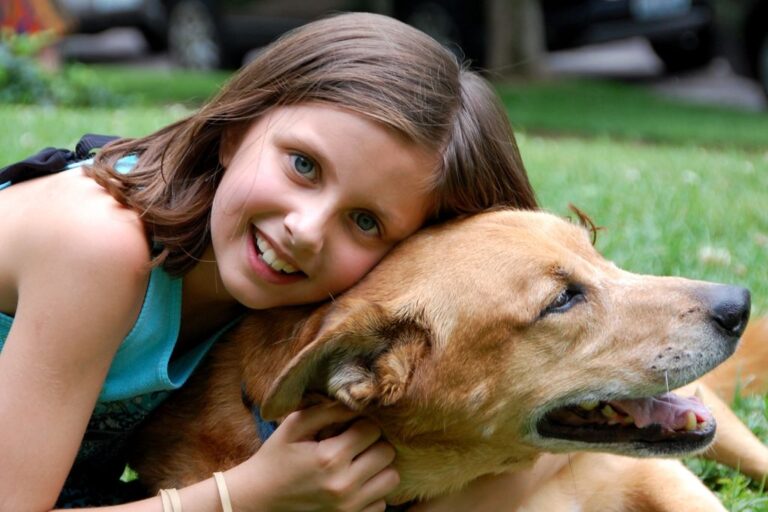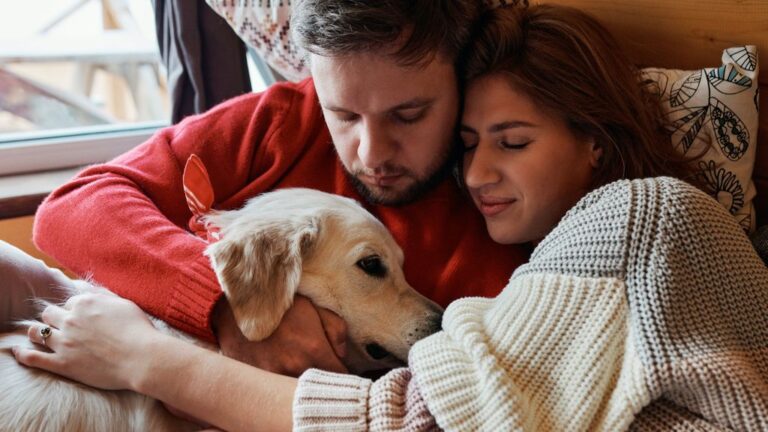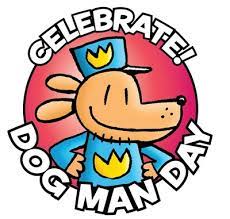Socializing Your Dog: A Step-by-Step Guide
Socializing your dog is an important aspect of their training and development. It helps them become well-adapted and sociable, reducing the chances of developing fears and aggression. In this step-by-step guide, we will explore the benefits of socializing your dog, when to start, choosing the right methods, common challenges, and tips for successful socialization.
Key Takeaways
- Socializing your dog is crucial for their well-being and behavior.
- Start socializing your dog during the puppy socialization period.
- Use positive reinforcement training to encourage desired behavior.
- Expose your dog to different environments to build their confidence.
- Interact with other dogs and people to improve their social skills.
Why Socializing Your Dog is Important

Benefits of Socializing Your Dog
Socializing your dog at a young age is crucially important. It helps them understand and learn to ignore others in their environment. By exposing your dog to various scenarios and beings, socialization prevents behavioral problems and promotes confidence. A well-socialized dog is typically more confident, less fearful, and less likely to develop aggression or anxiety in unfamiliar settings. So, make sure to prioritize socialization to give your dog the best life possible.
Common Misconceptions about Dog Socialization
There are a few common misconceptions when it comes to socializing your dog. One of these misconceptions is that socializing your dog means letting them run wild in off-leash areas. While it’s important for your dog to have opportunities to play and interact with other dogs, it’s crucial to do so in a controlled and safe environment. Off-leash areas can be unpredictable and may not always provide the best socialization experiences. Another misconception is that socializing your dog means exposing them to as many experiences as possible, regardless of their comfort level. It’s important to respect your dog’s boundaries and gradually expose them to new experiences at a pace that they are comfortable with. Pushing them too far too soon can actually have the opposite effect and make them more fearful or anxious. Remember, socialization is about creating positive experiences for your dog and helping them build confidence in different situations.
When to Start Socializing Your Dog
Puppy Socialization Period
Properly socializing a puppy when they’re young is one of the most important things you can do to prevent future behavioral issues. Puppies go through a critical period of socialization in the first three to four months of their lives, which is a time when their fear responses are lowered, allowing them to explore the world around them. As puppies get older, they may become more fearful of novel stimuli and things they have not yet encountered. That means your first goal with socialization is to expose your puppy to anything they need to be comfortable with when they get older. Now, this doesn’t mean you should just throw your puppy right into the deep end! To make the socialization process positive and effective, start by introducing your puppy to new experiences gradually. Begin with familiar environments and people they trust, then gradually expose them to new environments, different types of people, and other dogs. Use positive reinforcement techniques, such as treats and rewards, to create positive associations with new experiences. Remember, the critical socialization period for puppies is between 3 and 12 weeks of age. During this time, it is important to expose your puppy to a variety of people (children, males and females, people in uniform and men with beards and hats), other dogs (friendly, big and small), other animals (cats and pocket pets, if you have them), and different environments (grass, concrete, and water). By providing your puppy with positive and gradual socialization experiences, you can help them develop into confident and well-behaved dogs.
Socializing Adult Dogs
When it comes to socializing adult dogs, it’s never too late to start. We understand that adult dogs may have missed out on early socialization opportunities, but with patience and consistency, they can still learn to be comfortable in various situations. Here are some tips to help you socialize your adult dog:
- Take it slow: Introduce your dog to new people and environments gradually. Start with one or two individuals and gradually increase the number of interactions.
- Positive reinforcement: Use treats and rewards to reinforce positive behavior during socialization. This will help your dog associate new experiences with positive outcomes.
- Seek professional help: If you’re facing challenges or if your dog shows signs of fear, aggression, or overexcitement, don’t hesitate to seek the assistance of a professional dog trainer or behaviorist.
Remember, socializing adult dogs requires patience and understanding. With time and effort, you can help your furry friend become more confident and comfortable in various social settings.
Choosing the Right Socialization Methods

Positive Reinforcement Training
Positive reinforcement is the cornerstone of modern dog training techniques. It operates on the principle that behaviors followed by rewards are more likely to be repeated. During training sessions, if a dog follows a command correctly and sits, immediate praise or a treat serves as a positive outcome. Dogs will associate sitting with receiving attention and rewards, thus reinforcing this desired behavior. It’s crucial to offer this reward promptly to ensure the dog understands what action earned it. Negative Reinforcement and
Exposure to Different Environments
When introducing your dog to new environments, it’s important to take it slow and make sure they have positive experiences. Dogs don’t generalize well, so just because they’re comfortable in one place doesn’t mean they’ll be comfortable in another. Start by exposing them to easy levels of new sounds and gradually increase the intensity. You can also take them to different types of environments, such as parks, stores, and dog-friendly restaurants. If your dog is shy, choose calm times and give them some distance from the action. If they’re confident, let them make new friends. Remember to always prioritize their safety and well-being.
Interaction with Other Dogs and People
When it comes to socializing our dogs, one important aspect is their interaction with other dogs and people. We believe in taking it slow and gradually exposing our furry friends to new experiences. We start by introducing them to one or two people and then gradually build up to larger crowds. It’s crucial that they get to meet people of all shapes and sizes, from tall and loud adults to small and quick-moving children. As for meeting other dogs, we ensure that it’s done in a safe manner, especially if our puppy hasn’t completed their vaccinations yet. Puppy classes can be a great way to kickstart their socialization journey. We also understand the importance of positive reinforcement in behavior training. Rewarding our dogs with treats or praise helps them develop healthy relationships and reduces the likelihood of social fears or aggression in the future. So, let’s take it slow, be patient, and make socialization a positive experience for our furry companions.
Common Challenges in Dog Socialization

Fear and Anxiety
Introducing a shy or fearful dog to a new situation can be stressful. These tips can help your dog feel comfortable.
- Go slow and pay close attention to their body language and behavior.
- Look for signs of fear such as leaning back, lowering, tucking, pinning back ears, lowering head, and a tucked tail.
- Give your dog distance if you see these signals.
By following these tips and best practices, you can help your dog to overcome their fear and live a happy, confident life.
Aggression
Aggression is a common behavioral issue among dogs, and it’s important to address it as soon as possible. Fears and aggression can lead to negative outcomes and can make your dog anxious or fearful in certain situations. To prevent this, it’s crucial to establish a foundation of consistency in your training regimen. This includes setting clear guidelines, practicing regular reinforcement, and managing other behaviors such as excitement urination and pulling on the leash. By using positive reinforcement and rewarding good behavior, you can reinforce the behaviors you want your dog to exhibit. Avoid scolding or punishing them for bad behavior, as this can cause confusion and fear. If you’re struggling with aggression or other behavioral issues, it’s always a good idea to seek professional help. Remember, addressing these issues early on can help prevent future problems and ensure a happy and well-socialized dog.
Overexcitement
Overexcitement can be a common challenge when socializing your dog. It’s important to address this behavior to ensure a positive socialization experience for both your dog and others. Responsible pet ownership plays a crucial role in managing overexcitement. Here are some tips to help you navigate this challenge:
- Set clear boundaries and rules for your dog’s behavior.
- Use positive reinforcement techniques to reward calm and controlled behavior.
- Provide mental and physical stimulation to help release excess energy.
- Gradually expose your dog to stimulating environments and situations.
Remember, patience and consistency are key when dealing with overexcitement. By implementing these strategies, you can help your dog become more balanced and well-behaved in social settings.
Tips for Successful Dog Socialization

Start Slowly and Gradually
When introducing your dog to a potential canine friend, it’s important to start slowly and gradually. Begin in a calm and neutral environment that has little to stimulate or distract your dog. Use a familiar, well-behaved dog to help with the introduction. This will allow you to learn how to handle these types of introductions. Go slowly at first, making sure both dogs are properly leashed. Keep your distance from the other dog and their handler, rewarding your dog for calm behavior. Approach the new dog slowly, allowing them to sniff and circle around each other. Afterward, walk away with your dog. Use plenty of positive reinforcement throughout the introduction process, rewarding your dog for confident behavior. Never use tight leashes or pull the dogs apart, as this can cause a negative reaction. Repeat the process as many times as necessary to ensure successful socialization.
Use Treats and Rewards
When it comes to training our dogs, using treats and rewards is a key strategy. We have found that positive reinforcement, such as treats, can be highly effective in encouraging desired behaviors. By offering a tasty treat as a reward, we create a positive association between the action and the reward. This helps our dogs understand what behaviors we value and encourages them to repeat those behaviors. Off-leash dog parks are a great place to practice using treats and rewards, as they provide a controlled environment for training and socialization. We have found that using treats and rewards in these settings helps our dogs learn to listen and respond to commands even in distracting situations. It’s important to remember that positive reinforcement should always be used in a gentle and encouraging manner, without any punishment or negative feedback. This ensures that our dogs enjoy the training process and continue to associate it with positive experiences.
Seek Professional Help if Needed
If you’re feeling overwhelmed or unsure about socializing your dog, don’t hesitate to seek professional help. Professional trainers and behaviorists can provide valuable guidance and support throughout the socialization process. They have the expertise to assess your dog’s individual needs and develop a customized socialization plan. Additionally, they can offer accommodations for dogs with specific challenges or fears. Remember, there’s no shame in asking for help when it comes to your furry friend’s well-being. So reach out to a professional and make the socialization journey smoother and more enjoyable for both you and your dog.
In Conclusion
Socializing your dog is a crucial step in raising a well-adjusted and friendly companion. By exposing your dog to various experiences, environments, and beings, you can help prevent fears and aggression, promoting a calm demeanor in different situations. Consistent training and socialization from an early age lay the foundation for a harmonious and fulfilling relationship with your canine friend. Remember, early and effective training is key to your dog’s well-being and adaptability. So start socializing your dog today and enjoy the benefits of a well-socialized furry companion!
Frequently Asked Questions
At what age should I start socializing my dog?
It is recommended to start socializing your dog as early as possible, ideally during the puppy socialization period, which is between 3 and 14 weeks of age.
What are the benefits of socializing my dog?
Socializing your dog helps them develop good behavior, reduces the chances of developing fears and aggression, and allows them to feel more comfortable in various situations.
Can I socialize an adult dog?
Yes, adult dogs can still be socialized, although it may take more time and patience. It is important to go at their pace and gradually expose them to new experiences.
What is positive reinforcement training?
Positive reinforcement training involves rewarding your dog for desired behaviors, such as treats or praise. This method helps to reinforce good behavior and create a positive association.
How can I help my dog overcome fear and anxiety during socialization?
It is important to go at your dog’s pace and create positive associations with the things they are fearful of. Gradual exposure, treats, and rewards can help them overcome fear and anxiety.
When should I seek professional help for dog socialization?
If you are struggling with socializing your dog or if your dog is showing signs of aggression or extreme fear, it is recommended to seek professional help from a certified dog trainer or behaviorist.





